When machinery followers look at Claas tractors, most will think of Renault Agriculture, and Claas’s acquisition of the French tractor brand which took place in back in 2003. However, the German manufacturer’s history with tractors dates back almost a lifetime prior to this.
This year marks the 25th anniversary since the official launch of the Xerion tractor range, a concept developed by August Claas some 65 years ago. In 1957, he developed and marketed the Huckepack tool carrier tractor, designed to carry a range of tools and implements. It was a self-propelled combine harvester which could be converted into an implement carrier once the harvest was over. However, production was short-lived, ending in 1960.

In 1957, August Claas developed and marketed the Huckepack tool carrier tractor, designed to carry a range of tools and implements.
Not letting go of the concept, Claas revisited the idea again in the late 1960s as part of the development of a new hydrostatic transmission for combine harvesters named the HSG project. Claas saw this as an opportunity to enter the high-end tractor segment and spent a further four years modifying the tractor, which was to be distributed in collaboration with Daimler-Benz.

Claas revisited the idea again in the late 1960s with the HSG project.
However, between 1970 and 1971 the machinery industry fell into crisis resulting in a major decline in sales. As result, Claas introduced a savings programme which saw the project shelved once again.
Third time lucky
by 1978, the idea was revisited and named Project 207 which after many years evolved into the Xerion tractor series as we know it today.

In 1985 several demount two-part adaptable combine harvester for the Xerion was built and field tested, but never officially made it to market.
During the development phases, Claas developed various bodies for the tractor. In 1985, a demount two-part adaptable combine harvester for the Xerion was built and field tested in the years that followed but never officially made it to market.
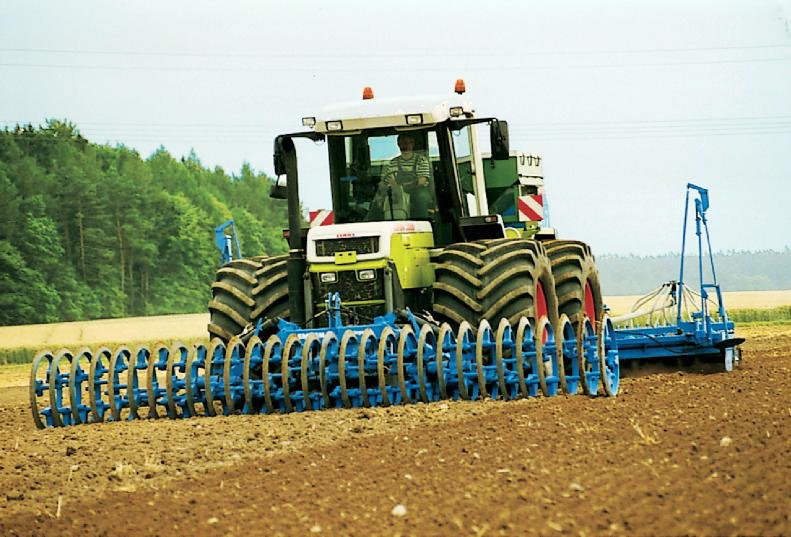
The Xerion 2500 was first unveiled to the public in 1993.
Initial lineup – the first Xerion
The Xerion 2500 was first unveiled in 1993. It was developed in-house by Claas engineers combining power and performance but with the attributes required for an agricultural systems vehicle. The cab could be placed in different positions for a range of uses: centrally mounted as normal, rotated 180° for reverse drive applications in either its central or off-centre position. Underneath the bonnet was a 250hp 8.7l Perkins engine coupled with the in-house developed HM-8 infinitely variable transmission (IVT). The HM-8 IVT transmission was later awarded the DLG gold medal at Agritechnica in 1997.
In 1999 the Xerion 3000 was launched and replaced the earlier 2500 model. It was also fitted with a 8.7l Perkins engine but churned out 315hp.
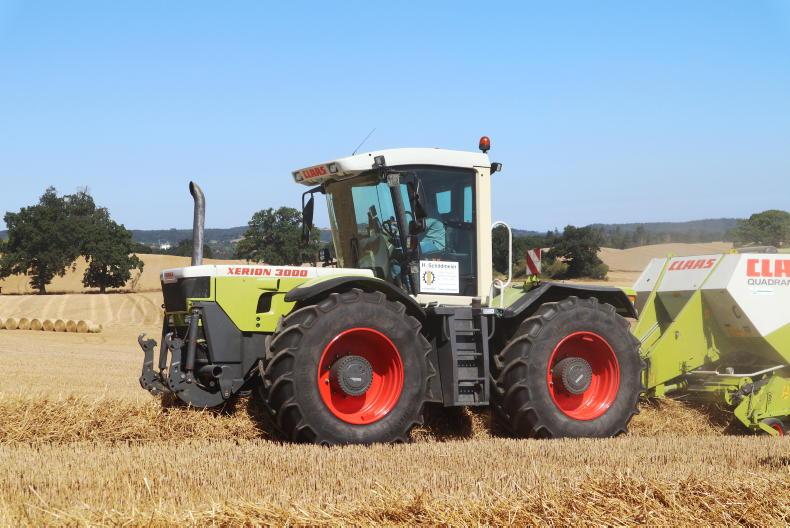
In 1999 the Xerion 3000 was launched and replaced the earlier 2500 model.
In 2004, the Xerion 3300 was launched to succeed the 3000, again in three different variants: Trac (conventional), Trac VC (rotatable cab) and Saddle Trac which saw a fixed cab mounted over the front axle. The 3300 produced 335hp and was fitted with a ZF IVT and Raba steering axle with electronic four-wheel steering equipped with six steering programmes.
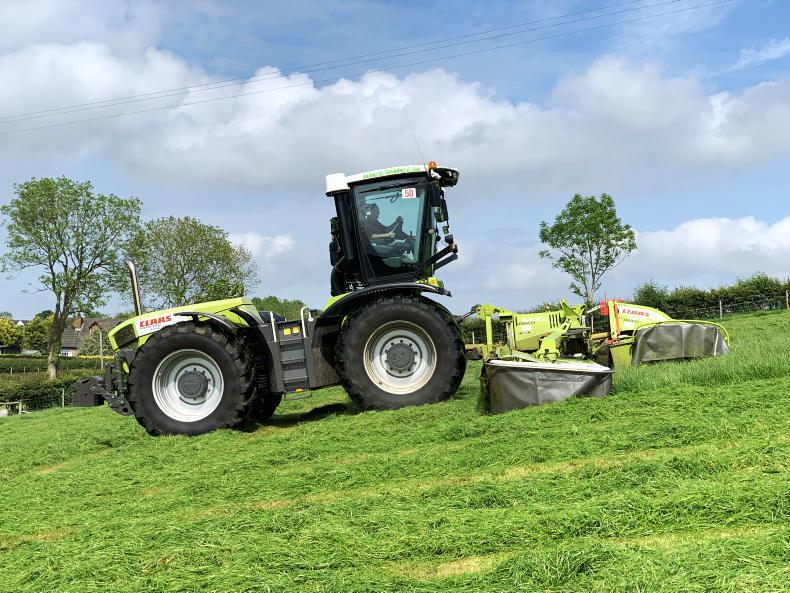
In 2004, the Xerion 3300 was launched to succeed the 3000
In 2007, the larger Xerion 3800 was launched which saw power output increase to 379hp, 44hp more than the 3300 although using same 8.8l Caterpillar six-cylinder engine block. Other updates included the Claas Sequence Management automatic headland control system, autosteer and Isobus compatibility.
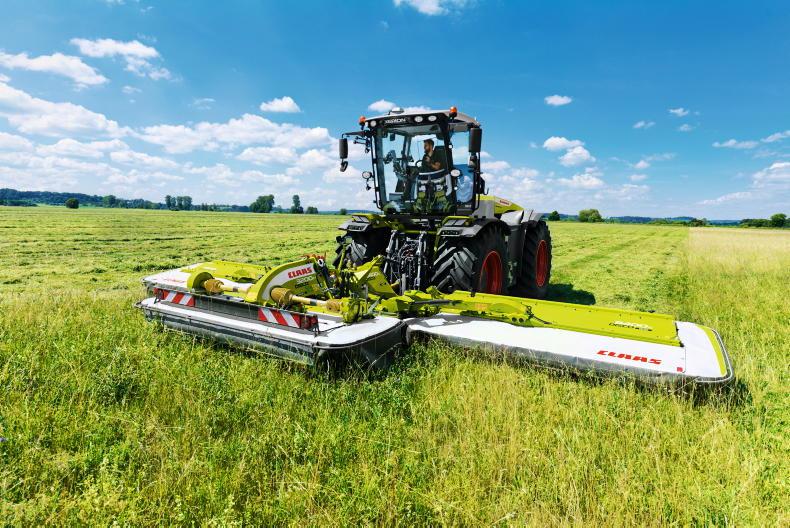
In 2007, the larger Xerion 3800 was launched which seen power output increase to 379hp, 44hp more than the 3300
Two more models were unveiled at Agritechnica in 2009, the Xerion 4500 and 5000 which extended the range to the over 500hp power band.

In 2009, the Xerion 4500 and 5000 were launched which extended the range to the over 500hp.
Current lineup
The range is today offered in three models, all of which come with the option of offering a wheeled tractor, tracked tractor (TS), with or without a rotating cab (VC) or in a Saddle Trac version. Branded as the 4200, 4500 and 5000 models, the range offers maximum outputs of 462hp, 490hp and 530hp respectively. Power is today sourced from a six-cylinder Mercedes-Benz engine, while Claas use the now proven Cmatic continuously variable transmission from ZF.
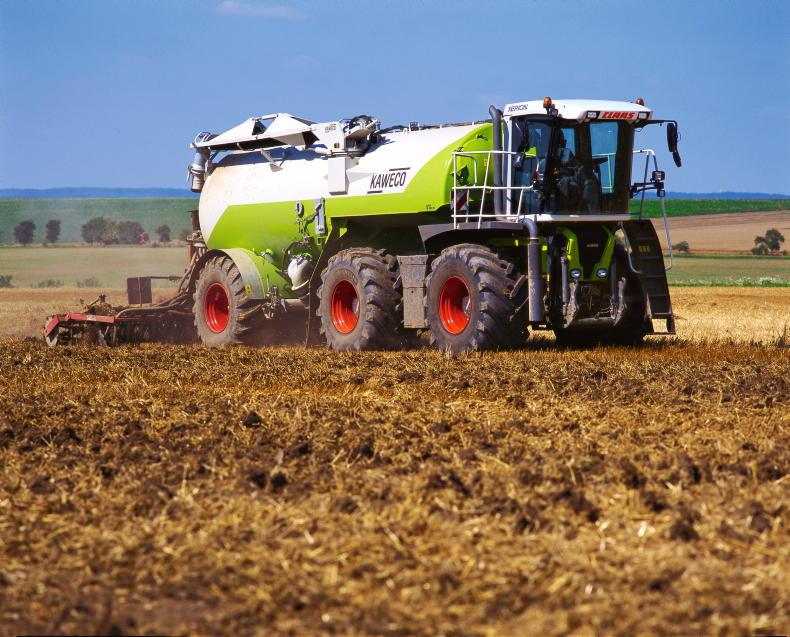
Saddle Trac variants saw a fixed cab mounted over the front axle.
With five steering modes, a ballast of 3,400kg can be fitted to the front and or rear of the tractor, while lift capacities are now up to 8.4t. The heavy-duty axles are designed to carry loads of up to 15t per axle at speeds of up to 50km/h. The entry level VC model costs €470,000 plus VAT. Just one of these newer-model Xerions has been sold in Ireland over the past decade. Many people have asked why the smaller horsepower Xerion models were discontinued over the years. Claas noted that this decision followed the arrival of Axion 900 series which covered that same power bracket.
New limited-edition model
Claas says that as many as 400 Xerions roll off the production line annually, with sales figures doubling over the past three years alone. To mark the 25th anniversary of the Xerion, Claas is producing a special edition livery in limited numbers with a retro look. This limited livery will reenact the colour scheme of the first Xerion 2500 from 1997. According to Claas, these limited editions will be on display at trade fairs and will be exclusively available to loyal Xerion customers. In addition, all Xerion units built between now and July 2023 will carry an anniversary sticker on the cab door.
Second hand demand
The increasing prices of new kit has left many contractors and farmers looking more and more to the secondhand market. Given the particular power bracket of the Xerion range and specalised nature, hours tend to remain relatively low even on some of the older examples.

The flagship 530hp Xerion 5000 which was launched in 2019.
Popular models on the used market today include the 335hp Xerion 3300 and 379hp Xerion 3800, especially in Vista Cab (VC) format. Although only a very small number of units from this era are believed to have been sold new on the Irish market, quite a few have since been imported from the UK and mainland Europe. These have been predominately imported to work reverse-drive butterfly mowers and large tillage equipment, as well as wood chippers.

Xerions in Ireland have been predominately imported to work reverse drive butterfly mowers, large tillage equipment as well as wood chippers.
Saddle Trac models prove even more of a rarity here in Ireland. It’s believed a few are working on the island of Ireland with large slurry tanker bodies and LESS slurry applicators, mainly working out of anaerobic digesters applying material on tillage land.
Expansion of range
Claas acquired a majority stake in Renault Agriculture in 2003, which put the German manufacturer in a position to add standard tractors to its product offering. The same year, the former Renault tractor plant at Le Mans in France produced its first run of tractors in the Claas livery. These tractors were later presented to the public for the first time at Agritechnica.
At that point, the Claas branded lineup comprised of four models – the Celtis, the Ares, the Atles and the Xerion, which was built in its Harsewinkel plant.
1978: Project 207 is launched
1993: The Project 207 tractor is renamed Xerion
1997: The Xerion 2500 is fully launched onto the market
2004: The 335hp Xerion 3300 introduced using a ZF CVT
2007: The higher powered 379hp Xerion 3800 is launched along with a Saddle Trac version
2009: The Xerion 4500 (483hp) and 5000 (524hp) are introduced
2013: Change to Tier 4 Daimler Benz/MTU engines. Xerion 4000 (429hp) added
2014: Xerion launched in the US
2019: Stage V Xerion 4200 (462hp), 4500 (490hp) and 5000 530hp) introduced
When machinery followers look at Claas tractors, most will think of Renault Agriculture, and Claas’s acquisition of the French tractor brand which took place in back in 2003. However, the German manufacturer’s history with tractors dates back almost a lifetime prior to this.
This year marks the 25th anniversary since the official launch of the Xerion tractor range, a concept developed by August Claas some 65 years ago. In 1957, he developed and marketed the Huckepack tool carrier tractor, designed to carry a range of tools and implements. It was a self-propelled combine harvester which could be converted into an implement carrier once the harvest was over. However, production was short-lived, ending in 1960.

In 1957, August Claas developed and marketed the Huckepack tool carrier tractor, designed to carry a range of tools and implements.
Not letting go of the concept, Claas revisited the idea again in the late 1960s as part of the development of a new hydrostatic transmission for combine harvesters named the HSG project. Claas saw this as an opportunity to enter the high-end tractor segment and spent a further four years modifying the tractor, which was to be distributed in collaboration with Daimler-Benz.

Claas revisited the idea again in the late 1960s with the HSG project.
However, between 1970 and 1971 the machinery industry fell into crisis resulting in a major decline in sales. As result, Claas introduced a savings programme which saw the project shelved once again.
Third time lucky
by 1978, the idea was revisited and named Project 207 which after many years evolved into the Xerion tractor series as we know it today.

In 1985 several demount two-part adaptable combine harvester for the Xerion was built and field tested, but never officially made it to market.
During the development phases, Claas developed various bodies for the tractor. In 1985, a demount two-part adaptable combine harvester for the Xerion was built and field tested in the years that followed but never officially made it to market.

The Xerion 2500 was first unveiled to the public in 1993.
Initial lineup – the first Xerion
The Xerion 2500 was first unveiled in 1993. It was developed in-house by Claas engineers combining power and performance but with the attributes required for an agricultural systems vehicle. The cab could be placed in different positions for a range of uses: centrally mounted as normal, rotated 180° for reverse drive applications in either its central or off-centre position. Underneath the bonnet was a 250hp 8.7l Perkins engine coupled with the in-house developed HM-8 infinitely variable transmission (IVT). The HM-8 IVT transmission was later awarded the DLG gold medal at Agritechnica in 1997.
In 1999 the Xerion 3000 was launched and replaced the earlier 2500 model. It was also fitted with a 8.7l Perkins engine but churned out 315hp.

In 1999 the Xerion 3000 was launched and replaced the earlier 2500 model.
In 2004, the Xerion 3300 was launched to succeed the 3000, again in three different variants: Trac (conventional), Trac VC (rotatable cab) and Saddle Trac which saw a fixed cab mounted over the front axle. The 3300 produced 335hp and was fitted with a ZF IVT and Raba steering axle with electronic four-wheel steering equipped with six steering programmes.

In 2004, the Xerion 3300 was launched to succeed the 3000
In 2007, the larger Xerion 3800 was launched which saw power output increase to 379hp, 44hp more than the 3300 although using same 8.8l Caterpillar six-cylinder engine block. Other updates included the Claas Sequence Management automatic headland control system, autosteer and Isobus compatibility.

In 2007, the larger Xerion 3800 was launched which seen power output increase to 379hp, 44hp more than the 3300
Two more models were unveiled at Agritechnica in 2009, the Xerion 4500 and 5000 which extended the range to the over 500hp power band.

In 2009, the Xerion 4500 and 5000 were launched which extended the range to the over 500hp.
Current lineup
The range is today offered in three models, all of which come with the option of offering a wheeled tractor, tracked tractor (TS), with or without a rotating cab (VC) or in a Saddle Trac version. Branded as the 4200, 4500 and 5000 models, the range offers maximum outputs of 462hp, 490hp and 530hp respectively. Power is today sourced from a six-cylinder Mercedes-Benz engine, while Claas use the now proven Cmatic continuously variable transmission from ZF.

Saddle Trac variants saw a fixed cab mounted over the front axle.
With five steering modes, a ballast of 3,400kg can be fitted to the front and or rear of the tractor, while lift capacities are now up to 8.4t. The heavy-duty axles are designed to carry loads of up to 15t per axle at speeds of up to 50km/h. The entry level VC model costs €470,000 plus VAT. Just one of these newer-model Xerions has been sold in Ireland over the past decade. Many people have asked why the smaller horsepower Xerion models were discontinued over the years. Claas noted that this decision followed the arrival of Axion 900 series which covered that same power bracket.
New limited-edition model
Claas says that as many as 400 Xerions roll off the production line annually, with sales figures doubling over the past three years alone. To mark the 25th anniversary of the Xerion, Claas is producing a special edition livery in limited numbers with a retro look. This limited livery will reenact the colour scheme of the first Xerion 2500 from 1997. According to Claas, these limited editions will be on display at trade fairs and will be exclusively available to loyal Xerion customers. In addition, all Xerion units built between now and July 2023 will carry an anniversary sticker on the cab door.
Second hand demand
The increasing prices of new kit has left many contractors and farmers looking more and more to the secondhand market. Given the particular power bracket of the Xerion range and specalised nature, hours tend to remain relatively low even on some of the older examples.

The flagship 530hp Xerion 5000 which was launched in 2019.
Popular models on the used market today include the 335hp Xerion 3300 and 379hp Xerion 3800, especially in Vista Cab (VC) format. Although only a very small number of units from this era are believed to have been sold new on the Irish market, quite a few have since been imported from the UK and mainland Europe. These have been predominately imported to work reverse-drive butterfly mowers and large tillage equipment, as well as wood chippers.

Xerions in Ireland have been predominately imported to work reverse drive butterfly mowers, large tillage equipment as well as wood chippers.
Saddle Trac models prove even more of a rarity here in Ireland. It’s believed a few are working on the island of Ireland with large slurry tanker bodies and LESS slurry applicators, mainly working out of anaerobic digesters applying material on tillage land.
Expansion of range
Claas acquired a majority stake in Renault Agriculture in 2003, which put the German manufacturer in a position to add standard tractors to its product offering. The same year, the former Renault tractor plant at Le Mans in France produced its first run of tractors in the Claas livery. These tractors were later presented to the public for the first time at Agritechnica.
At that point, the Claas branded lineup comprised of four models – the Celtis, the Ares, the Atles and the Xerion, which was built in its Harsewinkel plant.
1978: Project 207 is launched
1993: The Project 207 tractor is renamed Xerion
1997: The Xerion 2500 is fully launched onto the market
2004: The 335hp Xerion 3300 introduced using a ZF CVT
2007: The higher powered 379hp Xerion 3800 is launched along with a Saddle Trac version
2009: The Xerion 4500 (483hp) and 5000 (524hp) are introduced
2013: Change to Tier 4 Daimler Benz/MTU engines. Xerion 4000 (429hp) added
2014: Xerion launched in the US
2019: Stage V Xerion 4200 (462hp), 4500 (490hp) and 5000 530hp) introduced

















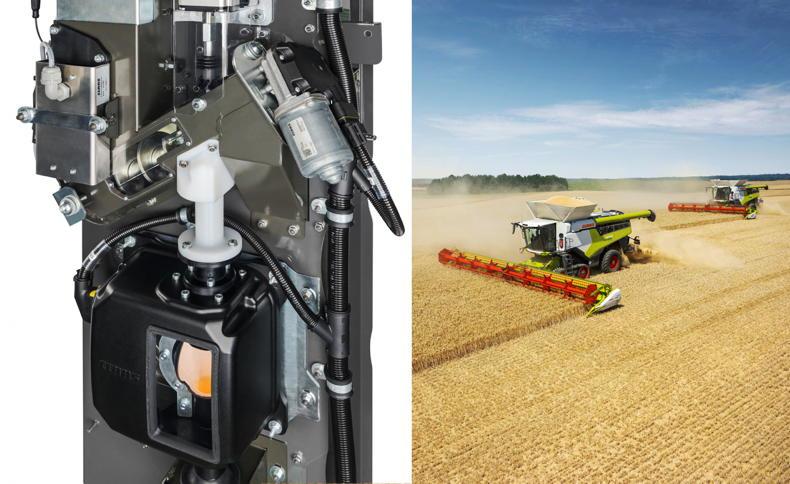
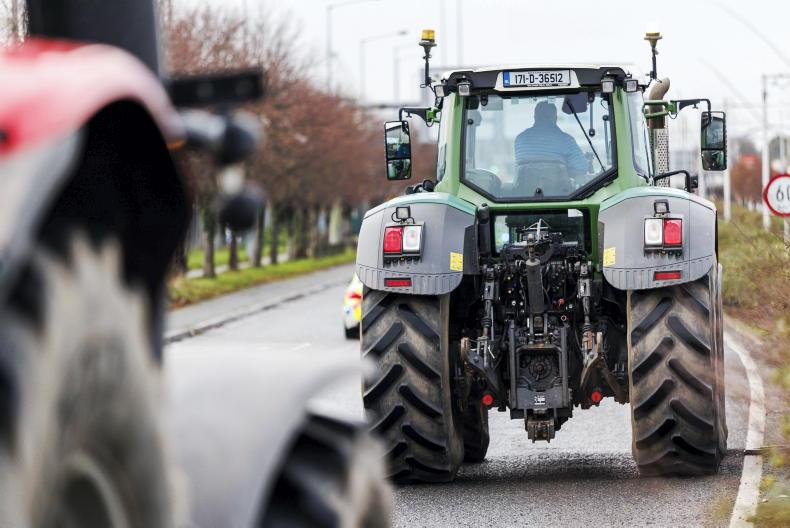
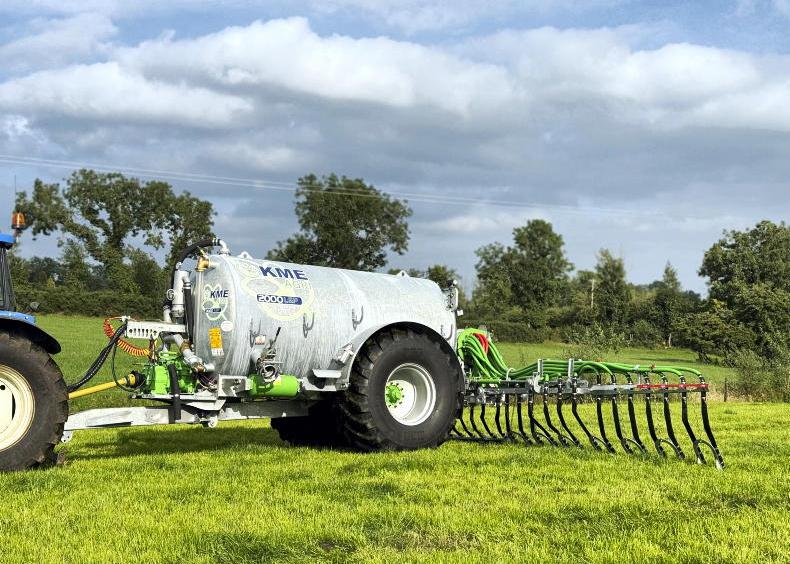
SHARING OPTIONS